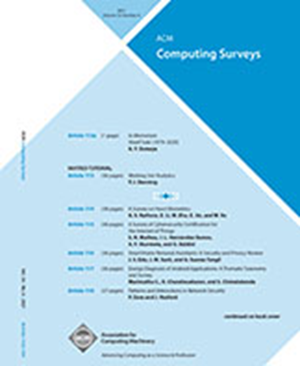图深度学习用于时间序列预测
IF 28
1区 计算机科学
Q1 COMPUTER SCIENCE, THEORY & METHODS
引用次数: 0
摘要
图深度学习方法已经成为处理相关时间序列集合的流行工具。与传统的多变量预测方法不同,基于图的预测器通过在跨越时间序列集合的图上调整预测来利用两两关系。这种条件作用在预测体系结构上以体系结构归纳偏差的形式出现,从而产生了一系列被称为时空图神经网络的模型。这些偏差允许在大量时间序列集合上训练全局预测模型,同时通过考虑它们之间的相关性(边),将预测定位为w.r.t.集合中的每个元素(节点)。图神经网络和深度学习在时间序列预测方面的最新进展使得采用这种处理框架具有吸引力和及时性。然而,大多数研究都集中在通过利用现代深度学习实践来改进现有架构上。相反,基础和方法方面还没有受到系统的调查。为了填补这一空白,本教程旨在介绍一个全面的方法框架,将预测问题形式化,并提供基于图的预测器的设计原则,以及评估其性能的方法。此外,我们还提供了该领域的概述,提供了设计指南和最佳实践,以及对开放挑战和未来方向的深入讨论。本文章由计算机程序翻译,如有差异,请以英文原文为准。
Graph Deep Learning for Time Series Forecasting
Graph deep learning methods have become popular tools to process collections of correlated time series. Unlike traditional multivariate forecasting methods, graph-based predictors leverage pairwise relationships by conditioning forecasts on graphs spanning the time series collection. The conditioning takes the form of architectural inductive biases on the forecasting architecture, resulting in a family of models called spatiotemporal graph neural networks. These biases allow for training global forecasting models on large collections of time series while localizing predictions w.r.t. each element in the set (nodes) by accounting for correlations among them (edges). Recent advances in graph neural networks and deep learning for time series forecasting make the adoption of such processing framework appealing and timely. However, most studies focus on refining existing architectures by exploiting modern deep-learning practices. Conversely, foundational and methodological aspects have not been subject to systematic investigation. To fill this void, this tutorial paper aims to introduce a comprehensive methodological framework formalizing the forecasting problem and providing design principles for graph-based predictors, as well as methods to assess their performance. In addition, together with an overview of the field, we provide design guidelines and best practices, as well as an in-depth discussion of open challenges and future directions.
求助全文
通过发布文献求助,成功后即可免费获取论文全文。
去求助
来源期刊

ACM Computing Surveys
工程技术-计算机:理论方法
CiteScore
33.20
自引率
0.60%
发文量
372
审稿时长
12 months
期刊介绍:
ACM Computing Surveys is an academic journal that focuses on publishing surveys and tutorials on various areas of computing research and practice. The journal aims to provide comprehensive and easily understandable articles that guide readers through the literature and help them understand topics outside their specialties. In terms of impact, CSUR has a high reputation with a 2022 Impact Factor of 16.6. It is ranked 3rd out of 111 journals in the field of Computer Science Theory & Methods.
ACM Computing Surveys is indexed and abstracted in various services, including AI2 Semantic Scholar, Baidu, Clarivate/ISI: JCR, CNKI, DeepDyve, DTU, EBSCO: EDS/HOST, and IET Inspec, among others.
 求助内容:
求助内容: 应助结果提醒方式:
应助结果提醒方式:


